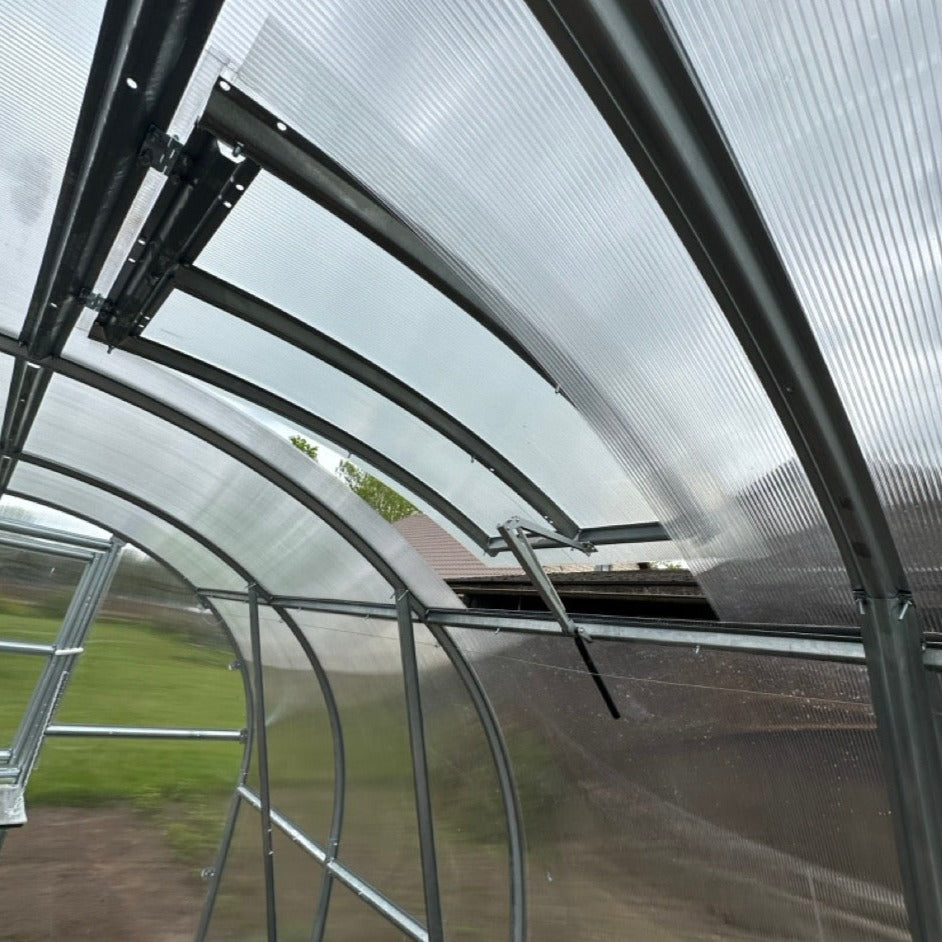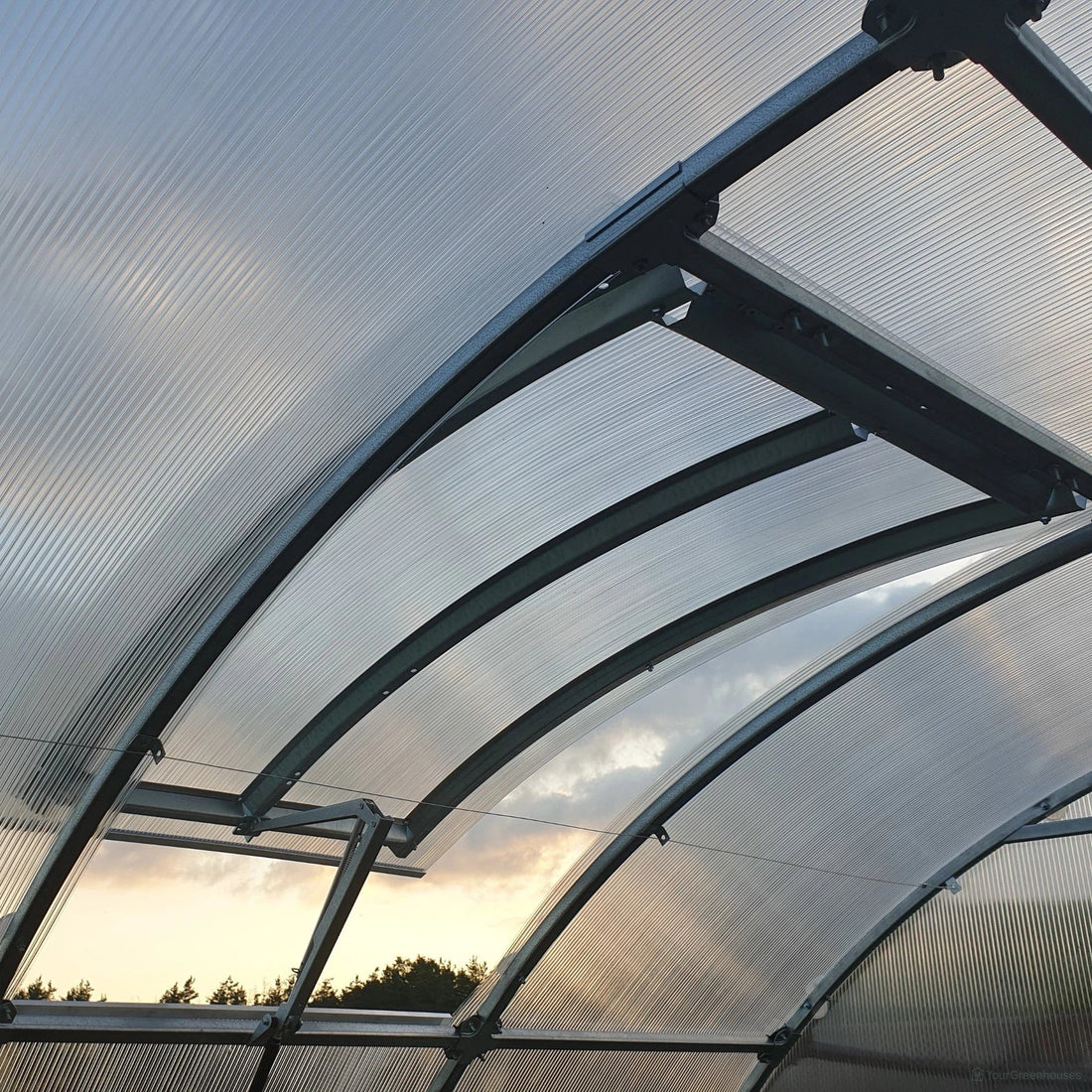Best Berries to Grow in Greenhouse: A Comprehensive Guide
The journey to greenhouse-grown berries is an exciting one. It allows you to enjoy a continuous supply of berries all year round.
However, not all berries are well-suited for greenhouse cultivation. And, in this article, we'll explore the best berries to grow in a greenhouse and provide insights into optimal growing conditions and cultivation strategies.
Read on!
Selecting the Right Berries for Greenhouse Cultivation
Among the plethora of available berries, strawberries, blueberries, raspberries, and blackberries stand out as top contenders for greenhouse cultivation. Get ready to discover the secrets behind maximizing yield and flavor in this berry bonanza!
Temperature Requirements
When selecting berries for greenhouse cultivation, temperature requirements should be considered. Berries that thrive in cooler temperatures, such as blueberries and blackberries, are ideal for greenhouse cultivation.
These berries prefer temperatures between 60-70°F during the day and 40-50°F at night. On the other hand, strawberries and raspberries prefer slightly warmer temperatures, between 65-75°F during the day and 50-60°F at night.
Maintaining consistent temperatures within the greenhouse to ensure optimal growth and fruit production is essential.
Berry Varieties and Their Suitability
Different berry varieties have other growth habits and requirements. When selecting berries for greenhouse cultivation, consider the following varieties:
Strawberries
One of the top berries to grow in a greenhouse is strawberries. These sweet and juicy berries are easy to grow, and with the controlled environment of a greenhouse, they can produce fruit almost year-round.
They have a more extended fruiting season and require well-drained soil with a pH between 5.5 and 6.5.
Day-neutral strawberries can be grown in containers or raised beds and, with the proper care and attention, can yield a large harvest. They also make an attractive addition to any greenhouse with their bright green leaves and delicate white flowers.
Blueberries
The blueberry, particularly the Highbush variety, is another berry that thrives in a greenhouse environment. They require acidic soil with a pH between 4.0-5.0 and are self-pollinating.
Blueberry bushes can produce a large harvest of plump, juicy berries with the proper soil pH and temperature control. They also make an attractive addition to a greenhouse with their vibrant green leaves and delicate pink and white flowers.
Blackberries
Thornless blackberries are ideal for greenhouse cultivation. They require well-drained soil and prefer slightly acidic soil with a pH between 5.5 and 6.5.
These blackberries flourish in well-drained soil, so greenhouse growers often tailor their soil mixtures to provide the ideal slightly acidic environment, maintaining pH levels within the optimal range.
Raspberries

Red raspberries stand out as the ideal variety for greenhouse cultivation, allowing growers to enjoy their sweet-tart flavor and vibrant color year-round. Like blackberries and strawberries, raspberries require well-drained soil with a slightly acidic pH ranging from 5.5 to 6.5.
Greenhouse growers meticulously monitor and adjust soil conditions to meet these requirements, fostering healthy raspberry plants and abundant fruit production.
These berry varieties thrive in greenhouse settings, allowing growers to cultivate high-quality fruit regardless of seasonal limitations.
Choosing a suitable variety for your greenhouse is essential based on its growth habit and requirements. You can ensure a bountiful harvest of delicious and nutritious berries by selecting suitable berries and providing optimal growing conditions.
Greenhouse Setup for Berry Cultivation
When setting up a greenhouse for berry cultivation, it is essential to consider the structural requirements. Greenhouses must be sturdy enough to withstand extreme weather conditions and support the weight of plants and equipment.
The greenhouse size should also be considered, as it will determine the number of plants that can be grown.
The greenhouse should be equipped with proper ventilation to prevent the buildup of excess heat and humidity. This can be achieved through the installation of fans or vents.
Ensuring that the greenhouse has adequate lighting through natural or artificial lighting systems is also essential.
Soil and Hydroponics Options
When it comes to growing berries in a greenhouse, there are two main options for soil: traditional soil-based cultivation and hydroponics. Soil-based cultivation uses soil as the growing medium, while hydroponics involves growing plants in nutrient-rich water without soil.
In soil-based cultivation, choosing high-quality soil rich in nutrients and good drainage is essential. The soil should be regularly fertilized and monitored for pH levels to ensure optimal growth.
Hydroponics, on the other hand, requires a different setup. The plants are grown in a nutrient-rich water solution constantly circulating through the system. This method allows for precise control of nutrient levels and eliminates the need for soil.
Overall, the choice between soil-based cultivation and hydroponics will depend on the specific needs and preferences of the grower. Both methods have advantages and disadvantages, and it is important to consider them carefully.
Temperature and Humidity Management
One of the most important factors to consider when growing berries in a greenhouse is temperature and humidity control. Maintaining the right temperature and humidity will ensure optimal growth and fruit production.
The ideal temperature for most berry plants in a greenhouse is between 60-75°F during the day and 50-60°F at night. However, this can vary depending on the specific type of berry being grown. It's important to monitor and adjust the temperature to prevent overheating or freezing.
Humidity levels should be kept between 50-70% for most berry plants. High humidity can lead to fungal diseases, and low humidity can cause plants to dry out. Using a humidifier or ventilation system can help maintain the proper humidity levels.
Pest and Disease Control
Pest and disease control is another crucial aspect of maintaining a healthy berry crop in a greenhouse. Preventative measures such as proper sanitation, regular inspections, and using disease-resistant varieties can help reduce the risk of infestation and disease.
Monitoring common pests such as aphids, spider mites, and whiteflies is also essential. Natural predators such as ladybugs and lacewings can be introduced to help control these pests. Organic pest control methods such as neem oil or insecticidal soap can also be effective.
Regularly removing dead or diseased plant material and disinfecting tools and equipment can help prevent the spread of disease. Keeping the greenhouse clean and well-ventilated can also help reduce the risk of disease and pest infestations.
Pruning and Training
Pruning and training are essential techniques for growing berries in a greenhouse. These techniques help to promote healthy growth and increase fruit yield.
Pruning involves removing dead or damaged branches, while training involves shaping the plant to grow in a particular direction.
One standard training method is the "fan" method, where the branches are trained to grow in a fan-like shape along a trellis or wire. This method allows maximum light exposure and air circulation, which can help prevent diseases and improve fruit quality.
Pollination Strategies

Pollination is critical for fruit production in greenhouse-grown berries. Unlike outdoor plants, greenhouse plants cannot access natural pollinators such as bees and butterflies. Therefore, growers must rely on artificial pollination methods.
One standard method is hand pollination, where growers use a small brush or cotton swab to transfer pollen from the male to the female flowers.
Another method is bumblebees, which can be purchased and released into the greenhouse. These bees are excellent pollinators and can significantly improve fruit yield.
Overall, proper pruning, training techniques, and effective pollination strategies are essential for successful berry cultivation in a greenhouse.
Harvesting and Post-Harvest Handling
Once the berries have ripened, it is important to harvest them promptly to prevent over-ripening and spoilage. Berries should be picked when fully ripe and have reached their optimal flavor and sweetness.
When harvesting, gloves are recommended to prevent damage to the delicate fruit and avoid any contact with harmful pesticides or other chemicals. Berries should be gently picked by hand or using a pair of scissors to avoid damaging the plant or the fruit.
After harvesting, it is important to handle the berries carefully to prevent bruising or damage. Berries should be sorted, and any damaged or spoiled fruit should be removed. It is recommended to store the berries in a cool, dry place to maintain their freshness and quality.
Berries can be stored in a refrigerator for a few days, but consuming them as soon as possible is best to ensure maximum freshness and flavor.
Berries can also be frozen for later use. They should be washed, dried, and placed in a single layer on a baking sheet to freeze berries. Once frozen, the berries can be transferred to a freezer-safe container and stored for several months.
Proper harvesting and post-harvest handling can help ensure that your greenhouse-grown berries are of the highest quality and provide delicious, nutritious fruit for you and your family.
Conclusion: Growing Berries in Your Greenhouse
Greenhouse berry farming offers a lucrative opportunity for growers to cultivate delicious fruits while maximizing profitability.
Growers can optimize their harvest and ensure a bountiful supply by carefully selecting berries and implementing proper cultivation techniques, such as temperature control, soil management, and pest prevention. Happy cultivating.












